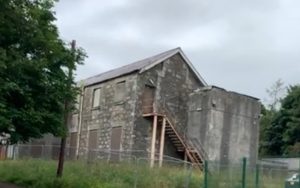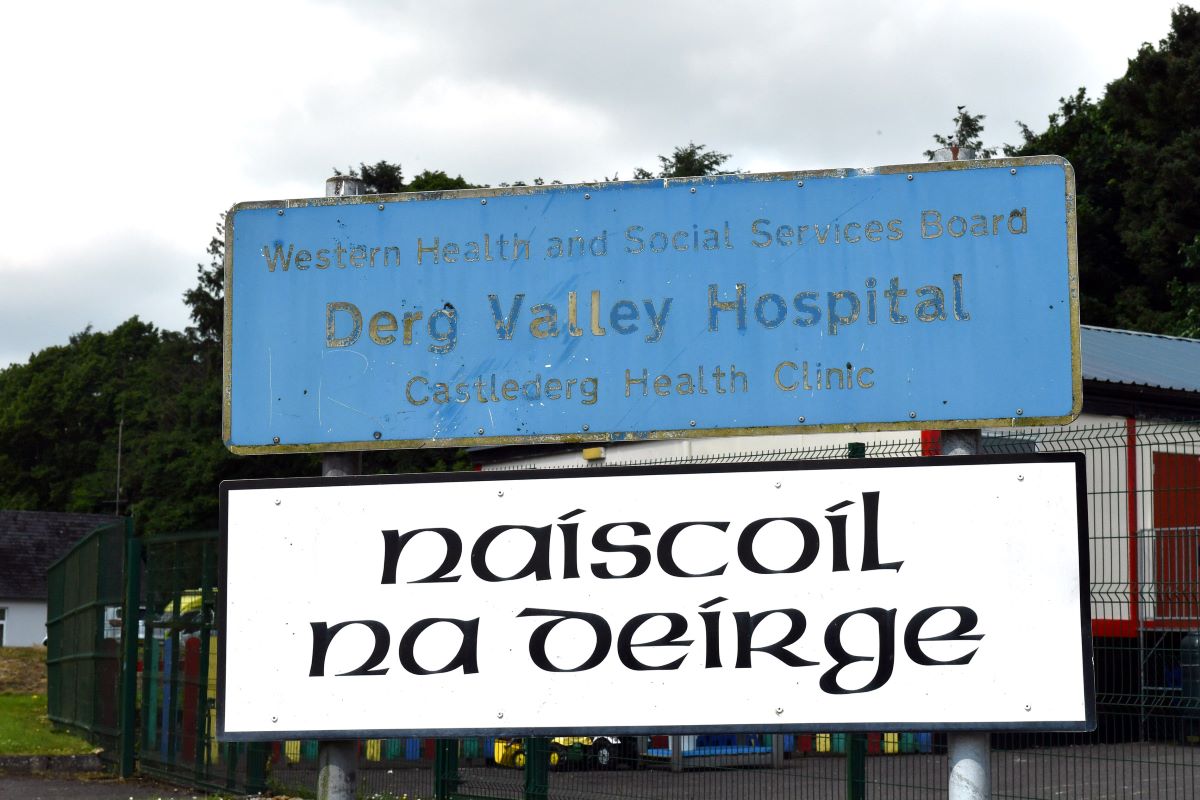Nearly two centuries ago, amidst the backdrop of the devastating Irish famine, grounds on the fringe of Castlederg became home to a refuge for the destitute.

The Poor Law Amendment Act of 1834, a landmark legislation passed in the English Parliament, paved the way for the establishment of workhouses across Ireland.
Aimed at reforming strategies against poverty, the act offered the desperately poor (referred to as paupers) a chance to work in exchange for food and shelter.
Castlederg’s Poor Law Union was formed on May 7, 1839, covering a vast expanse of 143 square miles.
On land donated by Sir Robert Ferguson, the first Guardian of the Derg site, construction began on a workhouse designed by architect, George Wilkinson, and contracted by John Maguire of Omagh.
However, Castlederg’s workhouse stood out from its counterparts in both design and cost. Unlike many others of similar size, the Derg workhouse had a two-storey structure which included an infirmary with several dozen beds.
With a price tag of £2,100 for construction and £484 for fittings, the workhouse was also among the cheapest constructed in the district.
After construction finished on February 20, 1841, the doors were opened and the workhouse admitted its first inmates on March 2.
But just a few years later, Ireland fell into the grips of a devastating famine and drastic measures would be taken in the workhouses.
The Poor Law Commission, recognising the need for additional facilities, ordered the construction of fever hospitals within workhouse premises.
Castlederg and Clogher were the first sites to establish the new fever hospitals, with the Derg building adopting a H-style complex extension to the infirmary, adding a second floor.
This new extension allowed for a further 56 inmates, with 36 beds in total allocated to the new fever hospital.
Although a safe haven from the horrors of the famine and poverty at the time, conditions within the workhouse were still dire.
Paupers were subject to hard labour and shared accommodation, which festered the spread of mould and dysentery.
In the post-famine years, as the population greatly dwindled, proposals to close the site emerged, with governors citing that there were only 17 inmates for a site built to cater for 250.
WINDS OF CHANGE
By 1929, the workhouse fell silent, its doors closing for the last time, laying empty for nearly ten years before it was demolished so that the Edward’s School could be built on the workhouse site in 1938.
The former fever hospital on the site was converted and modernised to create Derg Valley Hospital.
Modernised and equipped with state-of-the-art facilities, the hospital served the local community for over 60 years.
However, as economic
constraints loomed large, the hospital faced threats of closure in the
1980s.
Despite valiant protests from staff, locals, and churches alike, the hospital fully closed in 1998, with patients transferred to the Castlederg Health Centre.
Since then, the site has been untouched, beside the still-active ambulance dispatch facilities and Naíscoíl na Deírge, which occupies part of the land.
Back in 2021, it was announced that the site would be demolished when the lease expires this year.
Speaking at the time, Health Minister Robin Swann said, “The former Castlederg hospital site encompasses the following: The old hospital building, which is currently being considered for demolition by the Western Health and Social Care Trust owing to poor condition; an area which is leased by Naiscoil na Derg until February 2024 for educational purposes; and an area which is currently occupied by the Northern Ireland Ambulance Service (NIAS) and for which a licensing
agreement is currently being drawn up.
“Once the terms of the NIAS occupancy have been finalised, disposal plans with Naíscoíl na Deírge remaining in place will be considered by my department.”
Despite calls to retain the hospital building for modern community use, it has now been reduced to rubble, and the site cleared of any historic remnants.







